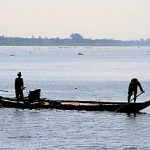Changing Mekong currents compound dam anxieties in Southeast Asia

Several factors are disrupting the terrain for investment in large hydropower dams, and governments should take note. The government of Laos officially submitted the Pak Beng Dam to the Mekong River Commission in mid-November and has begun preparatory work around the future dam site. While this announcement appears to indicate that the government of Laos and international funders for more than 100 hydropower projects are continuing to move full steam ahead despite serious concerns from downstream countries and affected communities, emerging financial risks and regional shifts are increasingly impacting the risk calculus for future projects. There are three regional factors disrupting the terrain for investment in large hydropower dams in mainland Southeast Asia. The first is the emergence of Myanmar as a competitor for energy sector investment. Myanmar is an underdeveloped country with significant hydropower potential of up to 100,000 megawatts, nearly four times that of Laos. Western sanctions and domestic instability previously prevented hydropower from moving ahead in Myanmar, and as a result the Salween and Irrawaddy remain largely undisturbed. Although internal political issues in Myanmar raise questions about the speed and extent of development that is politically feasible, investors are interested. The IFC is supporting a country-wide Strategic Environmental Assessment for hydropower development, and there have been a plethora of Thai-Chinese joint projects in the Salween River Basin announced in recent years. These projects will compete strongly for financing that previously may have flowed towards projects in Laos.

